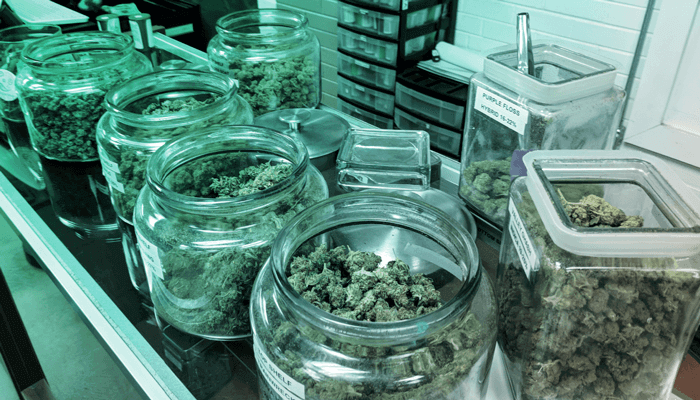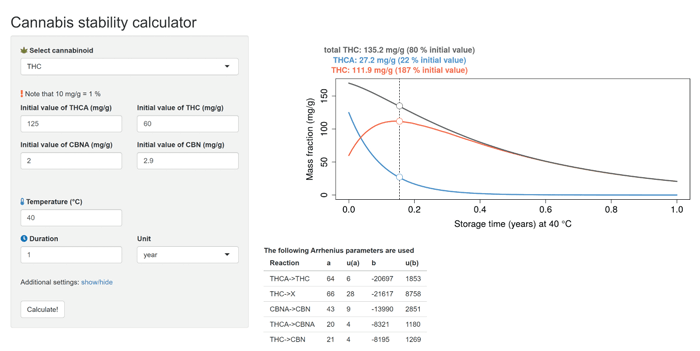Should cannabis flower be labeled with a “best before” date? Most territories don’t require it (yet), but the topic of stability and shelf-life is under discussion amongst regulators and cannabis companies who want to ensure consumers have a safe and consistent experience.
In a new paper, Juris Meija and colleagues at National Research Council Canada take a detailed look at the impact of temperature on cannabinoid degradation in dried flower (1). We know that temperature affects the rate of decarboxylation (for example, converting THCA into THC). To date, studies have mostly focused on high temperatures (over 100 ◦C) over a short time – mimicking decarboxylation in an oven or when vaped.
What happens to major and minor cannabinoids when cannabis is stored in warehouses or dispensary shelves for weeks, months, or even years? Previous studies of decarboxylation at room temperature used now-outdated methods or looked at only one cannabinoid. In this study, the team used a homogenous cannabis reference standard and a liquid chromatography-tandem mass spectrometry (LC-MS/MS) method to measure (often tiny) changes in samples stored for up to a year, at temperatures from -20 to 40◦C.
The results allowed the researchers to develop a cannabis stability calculator (free), where you can input different starting values, temperatures, and durations to see how the concentration of cannabinoids will change over time.

The authors hope that the results will help regulators set degradation thresholds or shelf-lives, and help the industry lay the framework for standardization of stability testing. There’s still work to be done, though. Speaking to The Cannabis Scientist, Meija said, “There are still many unanswered questions, such as how much the kinetic parameters vary from strain-to-strain, or between hemp and cannabis.”

References
- J Meija et al., Anal Bioanal Chem, [Online ahead of print] (2021). DOI: 10.1007/s00216-020-03098-2.




